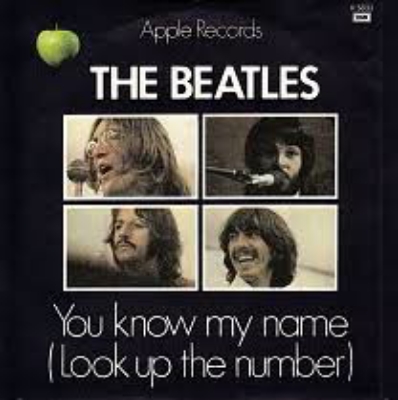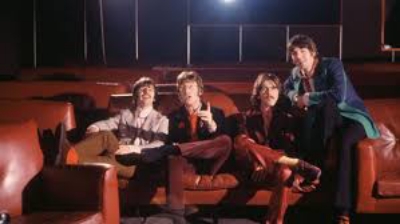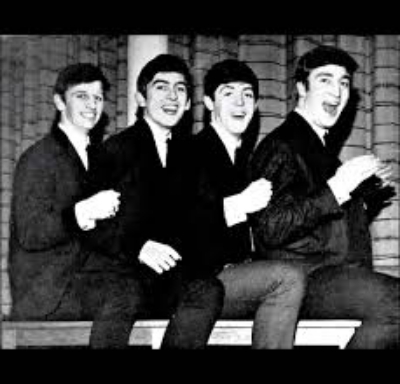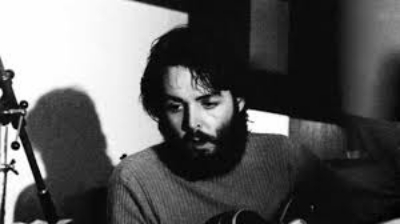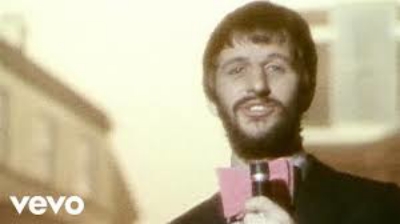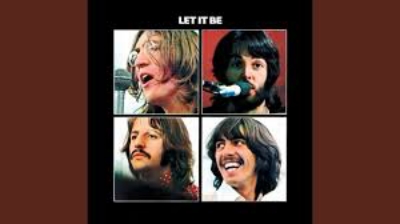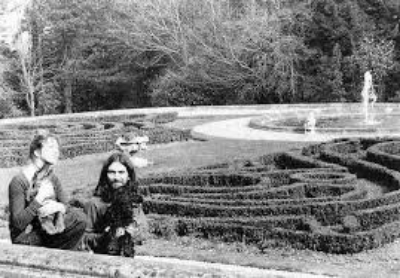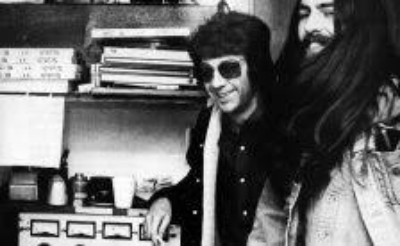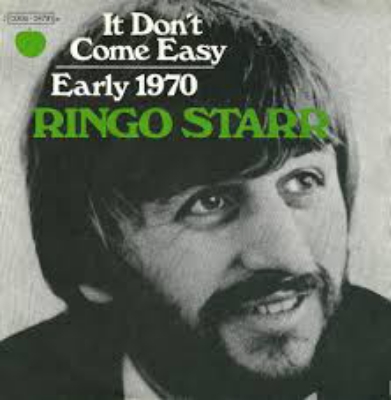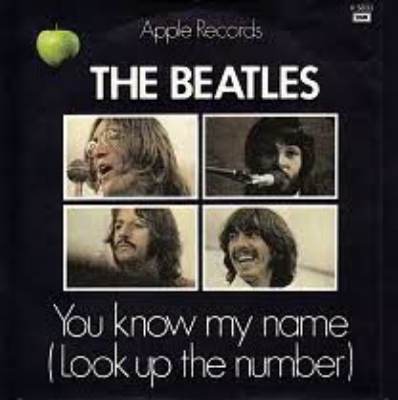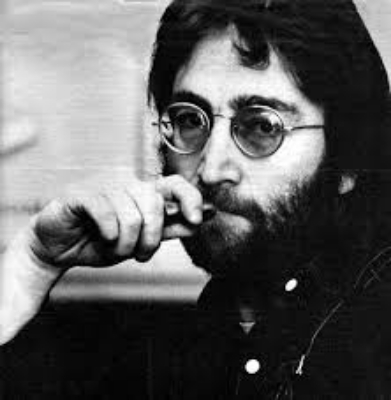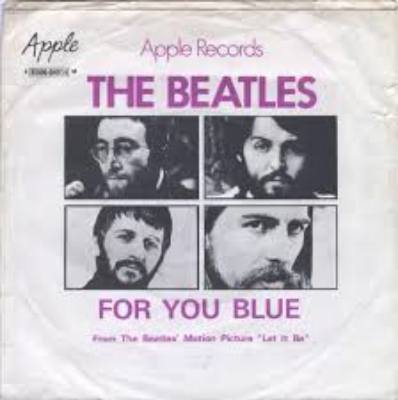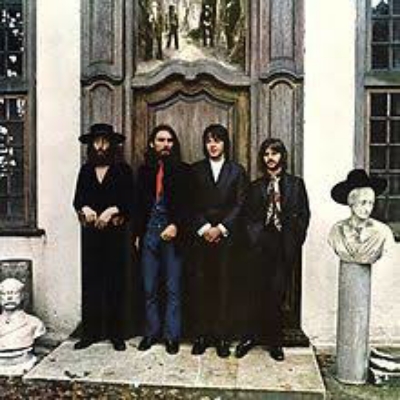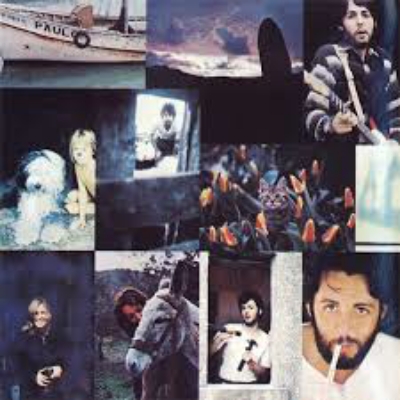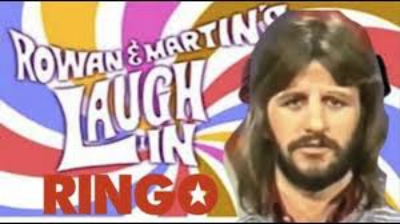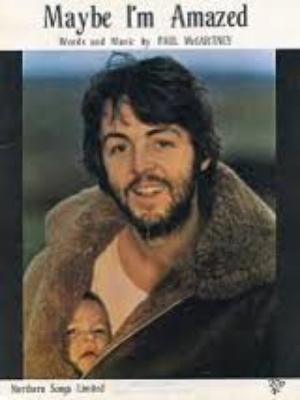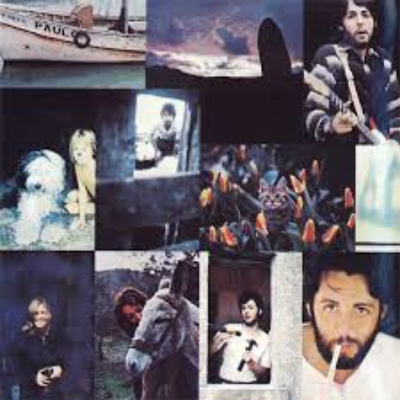-During an interview with a reporter from the French magazine L'Express, John Lennon states that The Beatles smoked marijuana in a restroom at Buckingham Palace on the day they were given their MBE's (in 1965). Questioned about John's comment, a spokesman for Buckingham Palace replies, "Obviously when people come along to an investiture, toilet facilities are available."
Fab Four Blog
Top 20 Song Chart for March 21, 1970
"Let It Be"

-A promotional film for The Beatles song, Let It Be, is broadcast on UK television, on the program "Top of the Pops."

Back on this date in 1963
The Beatles at the Regal Cinema, St. Aldate Street, Gloucester, Gloucestershire
The Beatles perform at Mossway Hall, Croxteth, Liverpool and at the Liverpool Jazz Society.

Today Paul McCartney returned to Abbey Road for a brief session having finished recording his debut album McCartney on February 25, 1970. From then he prepared artwork and the release schedule.
The only song listened to on this occasion was Oo You. McCartney listened to both the eight-track and stereo mix, which had been previously prepared at Morgan Studios.

Today a shoot took place at the Talk Of The Town, a popular cabaret venue situated at 10 Cranbourn Street near London’s Leicester Square. The venue was renamed the Hippodrome in the early 1980s.
A new mono mix of the song Sentimental Journey had been prepared at EMI Studios on March 13th. The mix omitted one of Starr’s vocal tracks, allowing him to sing live during the shoot. Starr varied the lyrics slightly during his performance, and ad-libbed some words over the applause at the end which was accompanied by the Talk Of The Town Orchestra, conducted by George Martin.
UK and US flags were hung on either side of the stage, and male and female dancers joined Starr onstage. Not to be outdone, towards the end of the clip backing singers Doris Troy, Madeline Bell and Marsha Hunt were lowered from the ceiling on a platform.
The cover photograph for the Sentimental Journey album was also taken on this day. It depicted Starr in a blue suit, standing before the Empress pub at the end of Admiral Grove, Liverpool. The image was actually part of the backdrop used in the video.

Let It Be! Number 2 on the Charts!

Sentimental Journey - Today a new mono mix of the title track of Ringo Starr’s debut solo album Sentimental Journey was made.
The session took place from midday to 1.30pm.
Today George and Pattie Harrison moved to Esher, Surrey in Friar Park. It was a Victorian mansion in Henley-on-Thames, Oxfordshire and had 120 rooms including a ballroom and library, plus towers and parapets.
The neo-gothic mansion had been purchased by the Harrisons for £140,000 in January 1970. Friar Park was set in 35 acres of gardens which included an underground boating lake and a 20ft replica of the Matterhorn mountain. Friar Park also nicknamed Crackerbox Palace, became Harrison’s main residence until the end of his life.
In 1889 the house was bought by Sir Frank Crisp (1843-1919), an eccentric lawyer and horticulturalist who lived there until his death. It was sold at auction to Sir Percival David, but following his divorce was donated to be used by nuns from the Salesians of Don Bosco order.
By the late 1960s the mansion was in a state of disrepair and due for demolition, and Harrison needed to undertake extensive renovations to make it a home. The gardens had been used as a local dump, and were overgrown with ivy and brambles.
In the first few months the Harrison and their guests lived with no heating, furniture or beds. They slept in sleeping bags in the grand hall, with a constant fire burning in the huge fireplace.
The Harrisons were joined by their friends Terry Doran and Chris O’Dell, who helped them make the building inhabitable. Despite the conditions, the residents found it an enchanting place to live in and explore, and gradually it became a welcoming home for their many visitors.

Interview: George Harrison, London - March 11, 1970 (Entire Interview)
GEORGE: Ringo's completed a great album. I think it's called . . . Sentimental Journey it's called. And it's all the songs that Elsie and Harry and his uncle and aunties, that's his father and mother, they used to all sing and have parties all the time. So he sings all these old songs with the sort of old arrangements. He doesn't do the sort of modern arrangement, and it's really a nice album. Then John's doing an album, a Plastic Ono album, I think he's going to do that with Phil Spector. And I think Paul's doing an album which is, I should imagine like, if you remember Eddie Cochran did a couple of tracks like "C'mon Everybody" where he played bass, drums, guitar, and sang. So Paul's doing this sort of thing, where he's going to play all the instruments himself. Which is nice, because he couldn't possibly do that in the Beatles, you know, if it was a Beatle album automatically Paul gets stuck on bass, Ringo gets on drums. So in a way it's a great relief for us all to be able to work separately at the same time, and so maybe if I get a chance, I'd like to do an album as well, just to get rid of a lot of songs. So maybe. . .
JOHNNY MORAN: Just a George album.
GEORGE: A George album, [laughs] and so I'll try and get that together sometime during this summer, and I expect by that time we should be ready to do a new Beatle album.
---
GEORGE: It's the end of the Beatles like maybe how people imagine the Beatles. The Beatles have never really been what people thought they were, anyway. So, in a way, it's the end of the Beatles like that, but it's not really the end of the Beatles. The Beatles, you know, are going to go on until they die.
---
GEORGE: As far as the Beatles go we've got the Let It Be album. It's being held up really because we're trying to put the film out in about forty different cities throughout the world all at once, rather than sort of put on a premiere in New York and then let the critics say, "oh, well we think it's this, and we think it's that."
JOHNNY MORAN: What's the Beatle film going to be about?
GEORGE: The Beatle film is just pure documentary of us slogging and working.
JOHNNY MORAN: On Let It Be?
GEORGE: Yeah on the album, and the hold-up of the album is because we want this film to go out simultaneously. Originally we were rehearsing, we were rehearsing the songs that we were planning to do in some big TV spectacular or something. We had a vague idea of doing a TV show, but we really didn't know the formula of how to do it because we didn't really want to do . . . obviously we didn't want to do a Magical Mystery Tour, having already been on that trip, and we didn't want to do sort of the Tom Jones spectacular. And we're always trying to be . . . to do something slightly different. And we were down in Apple rehearsing, and we decided to film it on 16mm, to maybe use as a documentary, and the record happened to be the rehearsal of the record, and the film happened to be, rather than a TV show, it happened to be the film of us making the record. So it's very rough in a way, you know, it's nice because again you can see our warts. You can hear us talking, you can hear us playing out of tune, and you can hear us coughing and all those things. It's the complete opposite to this sort of clinical approach that we've normally had, you know, studio recording, everything, the balance, everything is just right, and you know, the silence in between each track. This is really not like that, but there's nice songs, really good songs on it. "Let It Be", of course, and "Don't Let Me Down." I think they're the two that you people would have heard of. There's one song which is a 12-bar, because I've never written a 12-bar before, and that's called "For You Blue." And it's just a very simple, foot-tapping 12-bar. The other one is a very strange song which I wrote the night before it was in the film, you see. At this time we were at Twickenham, and I wrote this song, it took five minutes just from an idea I had. I went into the studio and sang it to Ringo, and they happened to film it. And that film sequence was quite nice, you see, so they wanted to keep that sequence in the film, but I hadn't really recorded it in Apple with the rest of the songs. So we had to go in the studio and re-record it. Also, we put on "Across The Universe," which was a song on the album . . . for the charity album, it came out for Wild Life and that really got lost. It's been around for about three years now, 1967 [sic] I think we did that.
---
GEORGE: In fact, some people may be put off at hearing it, it sounds maybe . . . my attitude when we decided to use it as an album was that people may think we're not trying, you know, because it's really like a demo record. But, on the other hand, it's worth so much more than those other records because you can actually get to know us a bit, you know, it's a bit more human than the average studio recording.
---
GEORGE: I certainly, you know, don't want to see the end of the Beatles. And I know I'll do anything, you know, whatever Paul, John, Ringo would like to do, you know, I'll do it.

On this day in 1963
Hippodrome Theatre, Hurst St. Birmingham, Warks
After this date, the tour resumed on the 12th.
This date in 1964
Various locations, London to Newton Abbot
THe conclusion of the train filming, traveling this time from London to the Devonshire town of Newton Abbot, 2500 miles having been clocked up during the past week. A Monday to Friday work schedule, leaving weekends free, was maintained throughout the shooting, but for the necessary exceptions.
Ringo Starr in the recording studio (undocumented, but thought to be Trident Studios, London). Recording a re-make of It Don't Come Easy, assisted by George Harrison.

Back in 1965 on this date:
The Beatles filmed at what, in the movie, they assumed to be a temple, and what, in real life, they assumed to be a disused army camp. In fact, it was a ramshackle hospital for handicapped children and old people, the state of which disgusted the Beatle.)
Source: The Complete Beatles Chronicle - Mark Lewisohn
The Beatles’ final UK single of their career was Let It Be. The single was issued in stereo only, as Apple R 5833, with You Know My Name (Look Up The Number) on the b-side.
By the time of its release The Beatles were essentially no more, with each member working hard on solo or other projects. The single, coming two months ahead of the Let It Be album, was essentially a stopgap to give the impression that they were still working together.

A promotional film for The Beatles single, Let It Be, is broadcast in the UK on the program "Top of the Pops."
Also on this date,Yoko Ono discovers once again that she is pregnant. She is put under observation in an exclusive London clinic (where some visitors later insist that she was being weaned off heroin with methadone). After four days, she is allowed to return to Tittenhurst Park.
Back on this day in 1964
Another train related sequence was shot today at the station in Crowcombe, Somerset, when the Beatles ran along the platform adjacent to the slowly moving train, pestering the uppper-crust passenger (Richard Vernon) and shouting "Hey mister! Can we have our ball back?"
One of the two schoolgirls cast by director Richard Lester for a train sequence - shot, in fact, on the first day, - was Pattie Boyd, with whom he had previously worked in a television commercial for Smith's potato crisps. Right away, George Harrison took a liking to Pattie and they soon began dating, leading to their marriage on January 21, 1966.
Back in 1963
Gaumont Cinema, Piccadilly, Hanley, Staffordshire
The final night of the Helen Shapiro package tour. By this time, the Beatles had been elevated on the bill from playing the first spot to the final act in the first half.
-John Lennon agrees to experiment with Primal Scream therapy, the psychotherapy technique pioneered by Dr. Arthur Janov. John’s interest was aroused after Janov sent him a copy of his new book, “The Primal Scream,” which chronicles the theory behind his techniques. The book states that neurosis is a defense mechanism designed by the psyche to ease forgotten childhood pain, and can be treated by uncovering the root of that pain. The “primal scream” is the moment of unleashed anguish and passion, which breaks through the defensive blocks imposed by the vulnerable psyche. “That’s me!” Lennon cried as he read the book. He invited Janov and his wife, Vivian, to stay at his Tittenhurst Park home later in the month. Says Janov: “John was really taken with Primal Therapy. He wanted to rent the QE2 and have us all sail around the world doing Primal Therapy. He wanted to buy an island and found a ‘primal nation.’” (Perhaps this was one of John Lennon’s endless obsessions that actually did him some good.)

Way back in 1963 on this date....
The Beatles at the Odeon Cinema, Lord St. Southport, Lancashire
Today, Malcolm Davies - who had previously worked at EMI, created new stereo mixes of George Harrison’s song For You Blue.
The second of the eight attempts was judged to be the best. However, they were never featured in the Get Back album or the Let It Be album and therefore remained unreleased.
Glyn Johns’ two proposed Get Back albums had been rejected by The Beatles, but there was still a hope to relase the material in some form.

Back in 1964 on this date:
Studio Two, EMI Studios, London
Two sessions at Abbey Road, 10:00 am-1:00 pm and 2:30-7:15 pm. In two takes of the second re-make, "And I Love Her" was finally recorded to everyone's satisfaction, and then two more film songs were started and finished, both composed mostly by John: "Tell Me Why", done in eight takes, and his stunning ballad "If I Fell", finished in 15.
US release of The Beatles' LP, The Beatles Again, later reissued as Hey Jude (Apple). When first released, the cover had the title Hey Jude, but the label had the title The Beatles Again. Songs: Can't Buy Me Love, I Should Have Known Better, Paperback Writer, Rain, Lady Madonna, Revolution, Hey Jude, Old Brown Shoe, Don't Let Me Down, and The Ballad of John and Yoko. 33 weeks on Billboard chart; highest position #2.
Also on this day - According to a New York newspaper, John Lennon has slammed the Toronto Peace Festival, claiming the profits aren't being used toward peace initiatives, but to line the promoter's pockets. His album Live Peace in Toronto, however, recently went top 10.

-John Lennon cancels his participation in the planned Toronto Peace Festival after a dispute over admissions policy. John wanted the festival to be completely free to those attending.
The London Arts Gallery is given a court summons for showing John Lennon lithographs that have been declared "indecent" by the authorities. Or, as the summons itself put it, for showing "an indecent exhibition contrary to the Metropolitan Police Act, 1839."
Paul McCartney’s worked on his debut solo album on a third Abbey Road session Two mixes were made of two of the songs.
Hot As Sun had been recorded at Morgan Studio, London earlier in the month. It was remixed in stereo in the first of two sessions, and a copy of the best mix of Maybe I’m Amazed made on February 22nd.

Ringo Starr guest stars on the TV show, "Laugh-In."

-Film-maker Charlie Jenkins shoots footage for a promotional film of Paul McCartney's Maybe I'm Amazed, the song not destined to be released as a single. The completed promo film will be broadcast on April 19 in both the UK (by London Weekend Television) and the US ("The Ed Sullivan Show").

On this date, Paul McCartney recorded his debut album, McCartney, at Morgan Studios in London. McCartney’s home recordings included the following songs: The Lovely Linda, That Would Be Something, Valentine Day, Momma Miss America, Glasses, Oo You, Teddy Boy, Junk and the instrumental Singalong Junk.
At Morgan, between 10 and 20 February 1970, McCartney recorded Hot As Sun and Kreen-Akrore, plus overdubs for Junk, Singalong Junk, Oo You and Teddy Boy. Mixes were also made at the studio of Oo You, Teddy Boy, Junk and Kreen-Akrore, as well as unused mixes of The Lovely Linda, Glasses, Singalong Junk and Momma Miss America.
Little else is known about the Morgan Studios sessions, other than that the balance engineer was Robin Black. No documentation is known to exist for McCartney’s time there.
Better documented were Billy Martin’s sessions at Abbey Road, which McCartney booked directly rather than through Apple or AIR. On this first day new stereo mixes were made of The Lovely Linda, Momma Miss America, Glasses and Singalong Junk.

- 1970
- 1969
- 1968
- 1967
- 1966
- 1965
- 1964
- 1963
- 1962

